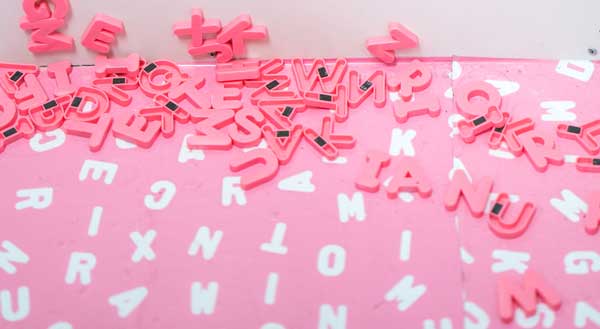5 Book Cover Design Principles for Nonfiction Authors

The bar for nonfiction book-cover design is much higher than that for most other genres. Unlike works of fiction, where the primary goal is to entertain a general audience, nonfiction books are much more serious in nature. Whether your goal is to help your audience at a personal level or in their business, your book will position you as an expert in their eyes.
Therefore, the quality of your book’s presentation will have to meet a high standard: that’s the natural expectation readers have from experts. Specifically, your book cover design is an area where you can’t afford to cut corners by going for the lowest available cost from a gig website, because your professional reputation will be riding on your book.
This article will teach you five guiding principles of good nonfiction book-cover design so that you can have an educated discussion with your designer and understand their constraints in the choice of fonts, colors and other cover elements.
Principle 1: Use the Highest Resolution Images Allowed by the Printing Equipment
When it comes to nonfiction books, there’s nothing that screams “amateurish” more than pixelated, blurred or otherwise low-quality images and photographs.
Advanced digital printing presses require files with high-resolution images – the fact that an image looks perfect on your computer screen doesn’t mean it’ll look good when printed.
Before acquiring or producing your images, make sure to check the specifications from both Amazon’s Kindle Direct Publishing (KDP) and IngramSpark, the most popular on-demand printers for self-publishers.
The minimum resolutions accepted by both platforms is 300 dpi, however, you should strive to supply the highest resolution you can obtain from your graphic designer, image creation software or photographic equipment.
For the full print-file specifications, check the following links:
KDP: https://kdp.amazon.com/en_US/help/topic/G201857950
IngramSpark: https://www.ingramspark.com/blog/file-requirements-for-print-books
Principle 2: Never Use Gimmicky Fonts

Since there are thousands of font families to choose from, it may be tempting to want to experiment with “unique” fonts to make your book cover stand out from the crowd.
But you need to consider that although the creative possibilities may be endless, the expectations from your market niche will not. Simply put, choosing the wrong font from the standpoint of your market will hurt your book cover’s appeal.
The problem is that you have no way of knowing which fonts will work in your niche and which won’t. This is the reason why you need to enlist the help of a professional nonfiction cover designer, because they’ll know from experience the fonts that’ll work best with your target audience.
Principle 3: Always Reserve the Largest Font for Your Book Title
Unless you’re a famous author with an established personal brand, you’ll want to showcase your book title, not your name, with the largest font size on your cover.
This is an important design decision since your book will most likely be discovered online and all that readers will have to go by is a small thumbnail image of your book.
Due to this real-estate limitation you also want your title to plant a question in your audience’s mind that can only be answered by clicking through the cover thumbnail to read the subtitle.
Here are some popular examples of online-friendly titles:
- Title: Blink, Subtitle: The Power of Thinking Without Thinking
- Title: The 4-Hour Workweek, Subtitle: Escape 9-to-5, live anywhere and join the New Rich
- Title: Brotopia, Subtitle: Breaking Up the Boys’ Club of Silicon Valley
Principle 4: Make Your Book Title Short (Ideal Length: 3 Words)

I believe that the shift of book discovery from offline to online bookstores is behind the current trend for shorter book titles.
When you think about it, the main job of your book cover is to be the backdrop for your title, both stylistically and in terms of the visual content of your graphic elements.
Your cover tells a story and your title gives it a name. For example, the cover of “The 4-Hour Workweek” shows the outline of someone lounging on a hammock tied between two palm trees with the sun in the background.
Although your title needs to be long enough to be compelling for your target audience, given the natural size limitations of book covers and the additional visual constraints of thumbnail images, you should ideally aim for 3-5 words maximum.
Whereas in the past (before thumbnail images ruled book discovery) titles used to be much longer and subtitles shorter – e.g. Title: The 7 Habits of Highly Effective People, Subtitle: Powerful Lessons in Personal Change – this formula has now flipped.
In fact, now 1-3 word titles abound and authors are getting very creative with them. Often, even a one-word title can be alluring enough to make us click on the thumbnail to find out more about the book.
As they say necessity is the mother of invention, so get creative! Now, since the shorter the title the higher the chances someone else may have come up with it first, make sure to search it on Google before committing resources to it.
Principle 5: Avoid Flashy or Intense Colors
As a final tip, although the goal of your cover is to stand out from the crowd, the excessive use of color will more than likely become counterproductive. Colors need to meet the expectations of your target audience in the same way that fonts do.
If a certain color palette is considered to be loud, amateurish or otherwise inappropriate by your audience, it’ll be a turn-off for sales even if it achieves the goal of making your book stand out from the rest.
Since the range of available colors is virtually unlimited, this is another area where you’ll need to enlist the help of an expert for advice.
A professional book cover designer will know what colors work for what audiences and will be able to make a good recommendation informed by their experience.
Your color palette must both appeal to your target audience and also align with your book’s niche. Otherwise you risk creating confusion in the minds of your readers.
For example, if you’re publishing a cookbook with a color palette that isn’t typically associated with food, you’ll have a hard time convincing someone to buy it.
Or if you publish a book on how to make money in the stock market but your main cover color is red, you’ll create a subconscious disconnect with your audience (hint: green is a much better choice for this niche).
Next Steps
Now you have a foundation for the basic principles behind good nonfiction cover design.
Before you hire a professional cover designer, it would be a good idea to do some research on Google and Amazon to find the top-selling books in your niche over the last 10-15 years.
This research will allow you to see not only what works in your market right now, but also how design has evolved over the years as book discovery transitioned from brick-and-mortar to online bookstores.
If you enjoyed this article and are in the process of writing, designing or publishing a nonfiction book, be sure to check out my free nonfiction success guide, drawn from years of experience editing books for bestselling authors (including a New York Times bestseller) and ghostwriting for CEOs and politicians. Simply click here to get instant access.
Ben
Leave me a comment below if you have any questions or a specific need that I can help you address – I operate an author services firm that specializes in helping entrepreneurs, professionals and business owners who want to publish books as a calling card for prospects, to establish their status as an expert or to just to generate additional leads for their businesses.
Here are some related posts I highly recommend:
How to Write a Compelling Book in 12 Steps: A Must-Read Guide for Nonfiction Authors
How to Grow Your Business Writing a Nonfiction Book
How Long Does it Take to Write a Book to Help Grow Your Business?
5 Book Cover Maker Mistakes to Avoid When Designing a Nonfiction Cover
Write Your Own Book and Become an Expert: 11 Reasons Why You Should

Bennett R. Coles is an award-winning author of six books published through Harper Collins (New York) and Titan Publishing Group (London). He is also the publisher at Promontory Press, editor for multiple bestselling authors (including a NY Times bestseller), ghostwriter for CEOs and politicians and the founder of Cascadia Author Services, a boutique full-service firm that specializes in premium author services specifically designed for busy professionals. Our end-to-end services include writer coaching, ghostwriting, editing, proofing, cover design, book layout, eBook production, marketing, printing and distribution.







Leave a Reply